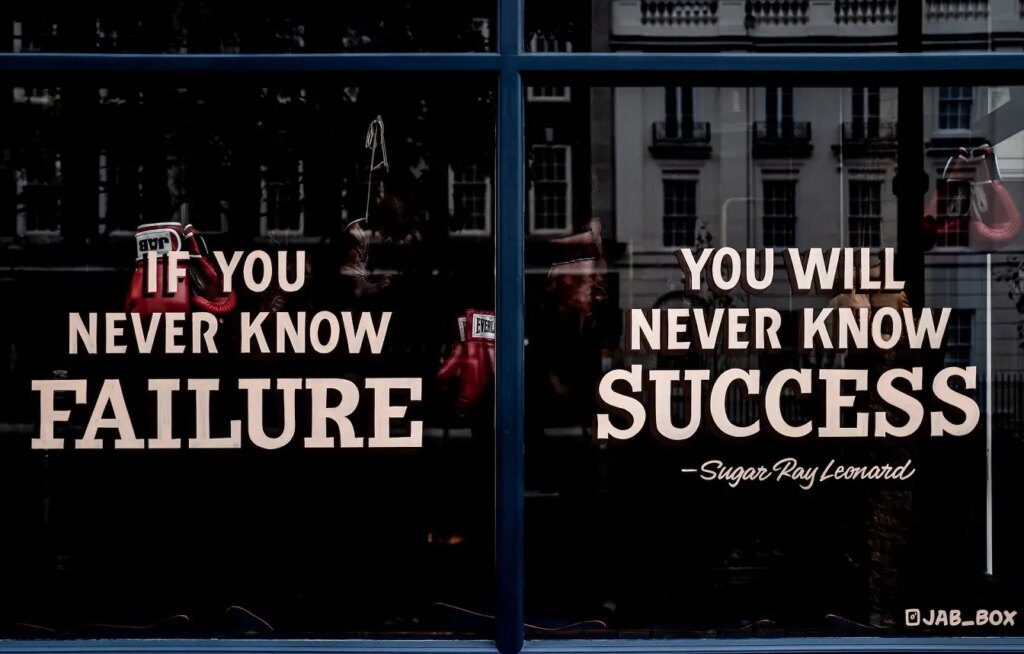How To Turn Failure Into Success: 12 Powerful Ways

This article has everything you need to know about how to turn failure into success.
At some point in life, everybody experiences failure, which can be the result of a failed relationship, failed fitness goal, failed business venture, or exam. While failing can be discouraging, having a positive mindset can help a person overcome the challenge.
Admitting mistakes and adopting new approaches to solving problems can be beneficial. Receiving feedback and embracing new ideas can even help. Ultimately, the critical aspect is reflecting on how one can learn from their failures.
How to Turn Failure Into Success:
1. Admit and accept your mistakes when things do not go according to plan, even if you tried hard.
Don’t get hung up on trying to fix something that has failed or is not working. For example, if you launched a business that wasn’t successful, it is vital to accept that the business wasn’t successful and not invest extra money in it.
Blaming someone else for your failures is not helpful; instead, take responsibility for your mistakes and commit to improving next time. Don’t let past failures keep you from pursuing new opportunities in the future.
2. May rest after experiencing failure.
It’s possibly not the best idea to jump right back into the project. If you need to clear your head or feel tired, take a brief break. Taking a break might mean temporarily closing a project or moving on to something different, such as a new job or project.
The goal is to invigorate yourself so that you can approach projects with a new perspective in the future. It’s important to remember that taking a break is not the same as quitting, and it is okay to admit if a particular endeavor is not right for you.
3. Even although it may be difficult, take the time to investigate what went wrong when you encountered a failure.
Reflect on the aspects that did not work or the reasons for the failure. For example, if you fail a test, consider your study habits. When did you start studying, and how long did it take you to study? Do you study and retain information effectively? Do you need to adopt a different learning strategy?
Answering these questions can help you learn from experience and perform better on future exams. It can be helpful to list everything that went wrong or contributed to the problem and then define each area that needs improvement. In this way, you can find new and better solutions.
4. While learning from your mistakes, avoid over-analyzing every detail or regretting your past actions.
Instead, focus on the lessons you have learned, and how you can use them moving forward. Every time you make a mistake, ask yourself, “What can I learn from this?”
For example, if you buy something expensive that you do not like and cannot return it, avoid dwelling on dissatisfaction or regretting your decision. Instead, use this experience as a chance to only shop at stores that accept returns.
5. It is important to view failure as part of the process, not as the end.
Think of it as the start or the middle of the journey to success. For example, if you asked someone out and they turned you down, do not let that discourage you from trying again in the future.
Know that failure is a common occurrence, and it is an inevitable part of trying new things and being human. Rather than seeing failure as the end, view it as a stepping stone to success.
Many successful people have experienced many failures, but they persevere and move on. Success should be the goal, while failure is a very important part of the journey.
6. Instead of thinking of yourself as a loser, think of yourself as a risk taker.
Failure implies that you tried something that did not work, supplying you with the opportunity to experiment with new or different methods. This is an ideal opportunity to try something new.
For example, if you have trouble getting to the gym even although you want to exercise, consider this an thrilling challenge. Explore other activities that inspire you, even if they scare you at first, such as yoga, rock climbing, or salsa dancing. Who knows, you might find a new activity that you really enjoy!
7. Realize that you’re not a failure.
Your self worth shouldn’t be defined by one mistake or setback. You are a complex and multifaceted person (1), and your failure in one aspect of your life doesn’t mean that you’re unsuccessful in all areas.
When you are feeling discouraged, focus on the positive aspects of yourself that make you unique and worthy. You may be compassionate, creative, persistent, or tenacious. Instead of dwelling on failure, embrace the courage it takes to overcome it and move on.
8. Instead of dwelling on your failures, celebrate them as steps towards growth and learning.
If you are facing rejection from a job or experiencing setbacks, admit to yourself for trying and taking the risk. Treat yourself and tell yourself that you’re getting closer to achieving your goals.
Embrace opportunities to develop new skills, such as interviewing or networking, and be happy with your progress. With every failure, you become stronger and better prepared to face the challenges ahead.
9. View starting over as a chance to rebuild after failure.
Suppose your business fails, get enthusiastic about starting a new venture by contemplating what you love and how you can lay a solid foundation.
Instead of considering starting over as a setback, view it as an exciting opportunity to try new things and make improvements. Think of ways to generate fresh and thrilling leads, such as developing a new name for your company or project.
10. Receive feedback.
If someone gives you feedback about your work or performance, view it as a valuable source of information rather than personal attacks or criticism. Identify aspects that are effective and that need improvement. Look for patterns in the feedback and use them to revise your work.
For example, if you are rehearsing for a musical, ask others for feedback on improving your skills. This feedback can be useful to improve your performance.
Also, seek the guidance of successful individuals to identify the common factors that led to their achievements.
11. Find creative solutions to overcome challenges.
When faced with problems or setbacks, do not give up. Instead, think of other solutions (2) and open to trying new approaches. Take a step back and assess the situation from a new perspective. Focus on what’s working well and build on that.
For example, if you are struggling to meet a project deadline, try breaking it down into smaller tasks and setting achievable goals. Keep going and do not let setbacks discourage you. Remember, success often requires persistence and flexibility.
12. Embrace new ideas.
Use your setback as a chance to explore new approaches. This is the perfect time to get creative and think outside the box. Failure often leads to learning, so do not be afraid to try something new.
For example, if your attempts to build a functional robot fail, consider other ways to assemble it. Try modifying the design or changing the mechanics. You may find an easier or more innovative method works better for you.
Starting from scratch can be beneficial. You can at all times reintroduce old ideas later, but starting fresh can help you find new perspectives and overcome previous obstacles.
Turning failure into success requires a change in mindset and an openness to learn from mistakes. It’s important to see failure as part of the process, not the end, and recognize that it is a chance to try something new or different.
It’s also important not to evaluate self-worth through the lens of failure and celebrate failure as a step closer to the ultimate goal. Listening to feedback, searching for alternative solutions, trying new ideas, and imagining new beginnings can help turn failure into success. Perseverance and a willingness to take risks are key ingredients in this process.
Thank you for reading this article on how to turn failure into success and I actually hope you take my advice into action.
I wish you good luck and that I hope that its content has been a good help to you.




